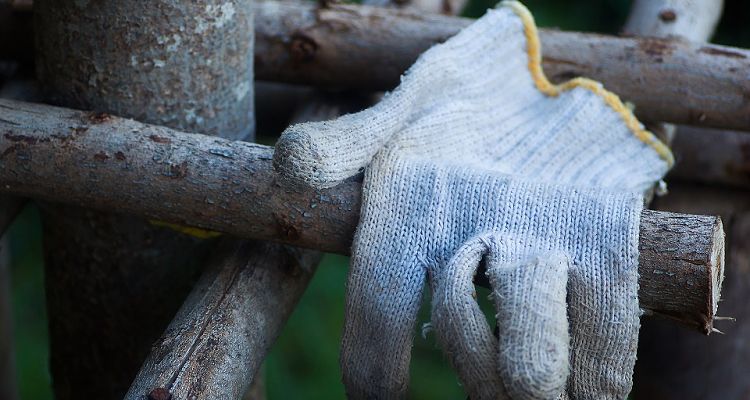
Moving can definitely be a strain on your pocket and also your body. There are probably some of you out there who are probably still recuperating from your recent do-it-yourself moving project which saw you lifting and moving just about everything with the help of friends. Proper use of moving equipment can reduce the total time spent on a move by up to 25%. If you want to spend the first few weeks basking in your new home rather than in bed riddled with pain, here are a few reasonably priced products that you can invest in.
Pre-Move Planning
Before the move, create a detailed inventory of your items, categorizing them by room and importance. This will not only assist in organizing the packing process but also in determining the right insurance coverage for your valuables. Consider using inventory apps that can help track your items through the moving process. Additionally, mapping out the layout of your new home can help in deciding what to take with you and what might need to be sold or donated.
Shoulder Straps
One of the best investments that you would ever make when thinking about a do-it-yourself move is purchasing a shoulder strap. Shoulder straps are designed to take the load off your shoulder especially when you are moving large furniture in your home. Most shoulder straps double as a dolly and are able to move everything from a large-screen television to a washing machine.
The American Academy of Orthopaedic Surgeons reports that moving heavy objects improperly is a leading cause of back injuries annually. They are inexpensive and can move items up and down the stairs which makes things much easier on your body when moving. When using shoulder straps for moving, you should first get some assistance from a friend or two in order to make this moving process go smoother. The friends who are willing to assist you should also have shoulder straps on a moving day as well.
It’s quite simple to use a shoulder strap, but your lifting method could be detrimental to your body if you are not doing it right. If you have to move a large item like say a dryer, for instance, the best way to do so is to place the item between you and your friend. Don’t worry too much about the weight of the dryer because the shoulder strap would take on most of the weight as it can take on close to 800 pounds.
What the shoulder strap would do is elevate the dryer so that it is never touching the floor when moving. This is a good thing since you don’t have to worry about it destroying your floor especially if you have tiles.
Hand Trucks
Hand trucks work exceptionally well when you have to relocate your furniture and appliances on moving days. Not only is it designed to save you time when moving but it also allows you to move these heavy items without putting your back out. Without a hand truck, one can easily have lower back injuries even if they are only lifting a moving box. Most hand trucks are made of steel or aluminum or even durable pipe frames. You can fit close to 600lbs on a hand truck which is also on wheels.
When selecting a hand truck, consider one with stair-climbing capabilities. These specialized hand trucks are equipped with a tri-wheel design that can navigate stairs, reducing the need for heavy lifting. Moreover, for those with space constraints, foldable hand trucks offer the same utility but can be easily stored away. To prevent accidents, invest in hand trucks with locking mechanisms on the wheels to ensure stability during loading and unloading.
Furniture Sliders
Furniture sliders, those unassuming pieces of equipment, can transform the daunting task of moving heavy furniture into a surprisingly manageable one. Picture this: you’re standing in your old living room, and the daunting task of moving a hefty bookshelf looms before you. But with furniture sliders, this bulky item becomes almost weightless, gliding across the floor with a simple nudge. These tools are a game-changer for DIY movers, leveraging the power of reduced friction to make heavy items feel lighter across various surfaces.
Whether it’s a solid oak dining table that’s been in the family for generations or a hefty sectional sofa that’s the centerpiece of your living room, sliders can handle the load with ease. Even bedroom furniture like heavy dressers or king-sized beds can slide smoothly from one spot to the next, sparing you strain and sweat. The beauty of furniture sliders lies in their simplicity and the sheer physics behind them – they distribute weight evenly and reduce the grip between the furniture and the floor, allowing for a smooth transition from one home to the next.
They’re not just for the heavy lifters; even smaller items like end tables and chairs can be moved with ease, ensuring that every piece of furniture, regardless of size, can be handled more efficiently. Proper use of moving equipment can reduce the risk of home damage during a move by up to 75%. To ensure safe furniture moving, always clear a path through your home before starting, removing any obstacles that could cause trips or falls.
Lifting Straps
The science behind lifting straps is simple yet profound. By redistributing the weight, they transform your body into a more efficient moving machine. The straps allow for a better posture while moving heavy objects, which is crucial for maintaining your body’s health. They are particularly beneficial for those awkwardly shaped items that seem to defy the laws of geometry. With lifting straps, you can maneuver them as if they were puzzle pieces effortlessly fitting into place. This not only protects your body but also the integrity of the items being moved, ensuring they arrive at your new home unscathed.
Ergonomically designed moving equipment can reduce physical strain by aligning with natural body movements. Moreover, lifting straps are a testament to the power of leverage and human ingenuity. They encourage a collaborative approach to moving, fostering teamwork and synchronization. As you and your moving partner coordinate your movements, the weight of even the most daunting items feels diminished. This not only makes the moving process more efficient but also injects an element of camaraderie into what can often be a stressful endeavor. With lifting straps, you’re not just moving your possessions; you’re elevating the entire experience of transitioning to a new chapter in your home and life.
Tool Kit
A toolbox to make sure that the necessary basic assembly and disassembly are handled. You will need to disassemble furniture such as beds, dining room tables, and more. These tools, which rank among the most crucial moving supplies, will enable you to handle any complexity you encounter throughout your move.
Expand your toolkit with versatile items such as adjustable wrenches and cordless power drills with various attachments. These additions not only facilitate the disassembly and reassembly of furniture but also can be used for quick repairs around the new home. For those unfamiliar with tool usage, consider including a basic manual or links to online tutorials for guidance on tackling common moving-related tasks.
Protective Gears
In the realm of DIY moving, the conversation often revolves around boxes and trucks, yet the unsung heroes of safety gear deserve their moment in the spotlight. Imagine you’re in the throes of packing, the tape gun in one hand, a box in the other, and you reach down—only to be met with a sharp edge that could have been a trip to the emergency room. This is where gloves come into play. Not just any gloves, but those crafted with durable materials designed to withstand cuts and abrasions, ensuring your hands remain as pristine as your grandmother’s china you’re packing away.
Now, let’s shift our focus to the knees—vital yet vulnerable. Knee pads are your personal cushions, guarding against the unforgiving floor as you shuffle from room to room, ensuring each item is securely packed. They’re not just pads; they’re your personal defense against the aches and pains that can linger long after the moving truck has pulled away. And for those moments when you’re hoisting items overhead, a hard hat isn’t just a piece of plastic—it’s peace of mind. It’s the difference between a successful move and one that ends with a thud.
These protective gears are not mere accessories; they are essential tools that empower you to move with confidence. They are the silent guardians that stand between you and the myriad of moving day mishaps
Back Brace
Finally, you would also want to invest in a back brace to assist with your moving project. A back brace can really save you some money at the chiropractor after moving day as it reduces the discomfort on the lower back when lifting heavy items and it also tapers abdominal support panels. It’s easy to wear as there are adjustable clips that would allow you to slide in and out of it well and it also comes with elastic suspenders.
For enhanced back support, look for braces with moisture-wicking fabrics to maintain comfort during strenuous activity. Additionally, braces with reflective strips can be beneficial for those moving in low-light conditions, ensuring visibility for safety. It’s also recommended to consult with a healthcare professional on the proper use of back braces to maximize benefits and minimize potential harm.
Moving Blankets
Moving blankets – often overlooked yet indispensable allies in the moving. Picture your cherished furniture, each piece with its own history and sentimental value. Now, envision safeguarding your furniture from the inevitable bumps and scrapes of a move. This is where moving blankets come into play, offering a protective embrace that is both gentle and robust.
These blankets serve as a buffer, a protective layer that lovingly wraps around each item, ensuring that your belongings are nestled safely against the rigors of transport. They are not just blankets; they are guardians of your memories, providing peace of mind as they shield your items from the harshness of shifting environments. With their substantial padding, they absorb the shocks and vibrations of the journey, allowing your possessions to arrive unscathed, whispering a silent testament to their effectiveness.
Stretch Wrap
Stretch wrap emerges as a silent guardian for your treasured possessions. Imagine this: as you prepare to transition your life from one home to another, your furniture, a silent witness to your life’s stories, needs protection. Stretch wrap is the unsung hero in this scenario, a simple yet ingenious tool that embraces your items, safeguarding them against the jostles and jolts of moving.
This clingy ally operates without the need for sticky adhesives, which means your furniture’s finish remains pristine, free from the residue that tape might leave behind. It’s particularly adept at keeping drawers in place and preventing doors from swinging open mid-transit. The wrap conforms to any shape, providing a snug fit that ensures even oddly shaped items remain cocooned in safety. It’s like custom-made armor, tailored to each piece’s unique contours, defending against scratches and dings that can occur when items rub together.
Consider stretch wrap not just as a tool, but as a reliable companion that helps preserve the integrity of your belongings. With each layer, it adds a buffer that absorbs the shocks of travel, allowing your items to arrive at their new destination in the same condition as they left. It’s a small investment that speaks volumes about the care and respect you hold for the physical manifestations of your memories.
Packing Tape and Tape Dispenser
In the midst of the packing chaos, where boxes become the bricks of your moving day fortress, the role of packing tape and tape dispensers emerges as crucial yet often underestimated. Picture this: you’re surrounded by all your belongings, now snugly secured within cardboard walls, and at this moment, the strength of your packing tape becomes the guardian of your goods. A robust packing tape acts as a steadfast sentinel, ensuring that the flaps of your boxes remain sealed, safeguarding the memories tucked inside from the perils of transit.
Now, enter the tape dispenser – a tool that might seem mundane at first glance but is nothing short of a hero in the moving process. It’s your trusty sidekick, slashing the time spent fumbling with rolls of tape and mitigating the frustration of searching for the elusive end. With a swift motion, the dispenser applies and cuts the tape, a simple yet transformative act that streamlines packing, turning what could be a Sisyphean task into a series of smooth, satisfying seals. It’s the difference between a fortress of boxes that stands tall and a flimsy structure that crumbles at the first sign of challenge.
Labeling Materials
Labeling materials are the cartographer’s tools, essential for charting a course through the sea of boxes that will fill your new space. Sharpies and labels stand as the silent sentinels of organization, their stark, bold lines a beacon of order amidst the chaos. They are the simple yet pivotal instruments that transform a bewildering pile of indistinguishable containers into a well-ordered collection, each with its own contents whispered on its label, guiding you through the unpacking journey like a map to buried treasure.
Consider the humble Sharpie, not just a marker, but a herald of efficiency. With each flourish, it demarcates your belongings, assigning them to their new domains. Labels follow suit, the stalwart tags that bear the critical insignia of your life’s inventory. They are the unsung heroes, the quiet custodians of your peace of mind, ensuring that the first night in your new abode isn’t spent in a frustrating quest for the essentials. They promise a systematic and stress-free process, where each box reveals its secrets at a glance, allowing you to orchestrate the unpacking symphony with the precision of a maestro.
Moving Truck or a Pickup
Are you renting a moving truck or using your pickup? Determine your method of transportation in advance because many truck rentals demand notice.
Choosing between a moving container or a rental truck depends on your budget, the size of your move, and your flexibility with timing, as containers can offer a more leisurely pace for packing and unpacking.
If you’re planning a DIY move, renting a moving truck or pickup can be a cost-effective solution. Determine the size of the truck you’ll need based on the quantity of stuff you’re moving. The truck or pickup should be reserved well in advance, especially during the busiest moving season. A DIY relocation with a moving truck or pickup can be easy and successful with proper planning and preparation.
When planning the logistics of your move, consider the environmental impact of your vehicle choice. Opt for trucks with fuel efficiency or those that use alternative fuels to reduce your carbon footprint. Additionally, ensure the truck is equipped with ramps or a lift gate to facilitate the loading process. For those with limited experience driving large vehicles, a short driving course or hiring a professional driver for the move could be a prudent investment.
Where to Obtain Moving Equipment and Tools
Over 35% of movers opt for rental equipment over purchasing. For starters, shoulder straps and lifting straps, those vital companions in the art of moving heavy objects, can often be found at local hardware stores or moving supply centers. These establishments are treasure troves for the DIY mover, offering a range of options from basic models to those with advanced features like extra padding and reinforced stitching for added durability.
If you prefer a more budget-friendly option, consider rental services. Many offer daily rentals, providing access to high-quality equipment at a fraction of the purchase price. This is not only cost-effective but also environmentally conscious, as it reduces the need for production of new items.
Hand trucks and furniture sliders are another pair of essentials that can transform a grueling move into a manageable task. Specialty moving retailers are your go-to for these items, offering a variety of models tailored to different needs—be it stair-climbing hand trucks or sliders designed for specific floor types. For those who value convenience, online marketplaces are a gold mine.
With customer reviews at your fingertips, you can make informed decisions and have these tools delivered straight to your door. Moreover, some online platforms allow you to buy used equipment from previous DIY movers, which can be a win-win situation—cost-effective for you and a decluttering opportunity for them.
Lastly, don’t overlook the potential of borrowing from friends or community lending libraries. This approach not only saves money but also strengthens community bonds. It’s a sustainable choice that echoes the ethos of sharing and reusing. In the end, whether you choose to buy, rent, or borrow, ensure you’re getting equipment that will stand up to the task at hand, safeguarding both your belongings and your back. Remember, a successful DIY move is as much about the journey as it is about the destination. With the right tools in hand, you’re well on your way to turning a new page in your life’s story.
After The Move
After the move, prioritize your recovery. Engage in light stretching exercises to alleviate muscle tension and consider scheduling a massage a few days after the move to help your body recuperate. Hydration and proper nutrition are also key; prepare easy-to-access healthy snacks and water for the moving day and the days following. Lastly, ensure you have a designated relaxation space in your new home where you can unwind without the sight of unpacked boxes.
Mistakes to Avoid in DIY Furniture Moving
When you’re gearing up for a DIY move, it’s like stepping into a dance with your furniture. One wrong step and you could be nursing a bruised shin or a broken vase. Here’s the inside scoop on some common missteps to sidestep:
- Underestimating the Complexity of Disassembly: Many dive into furniture moving without considering the intricate dance of disassembly. It’s not just about unscrewing bolts; it’s about understanding the sequence and method. Forgetting to keep track of which screws go where can turn reassembly into a jigsaw puzzle without a picture.
- Skipping the Prep Work: It’s tempting to jump straight into the action, but not prepping your furniture for the move is like skipping rehearsals before a big show. Failing to remove drawers from dressers or doors from hinges can lead to unwieldy, dangerous loads that are more likely to cause injury or damage.
- Lack of Spatial Awareness: Moving furniture isn’t just about brawn; it’s about brains too. Not measuring doorways, staircases, and the furniture itself can lead to a standstill, with you playing a frustrating game of Tetris trying to fit a square peg into a round hole.
- Forgetting to Protect the Furniture: It’s not just about getting from A to B. If you don’t wrap and protect your pieces, you might arrive with scratches and dents that tell a tale of neglect. It’s the difference between a piece that looks ‘lived-in’ and one that looks ‘worn out.’
- Neglecting Your Own Safety: In the hustle of packing and moving, it’s easy to forget about the person doing the heavy lifting – you. Not wearing proper footwear or ignoring the need for a solid grip can turn a simple move into a slip, trip, or fall, where the only thing moving is you – to the nearest first aid kit.





In regards to the shoulder straps the best ones that I have found and used is the GripSystem. It is the only one that I found that had back support, and reduces back strain by 70%! That right there is what sold me…lol…They work fantastic and have really helped me.